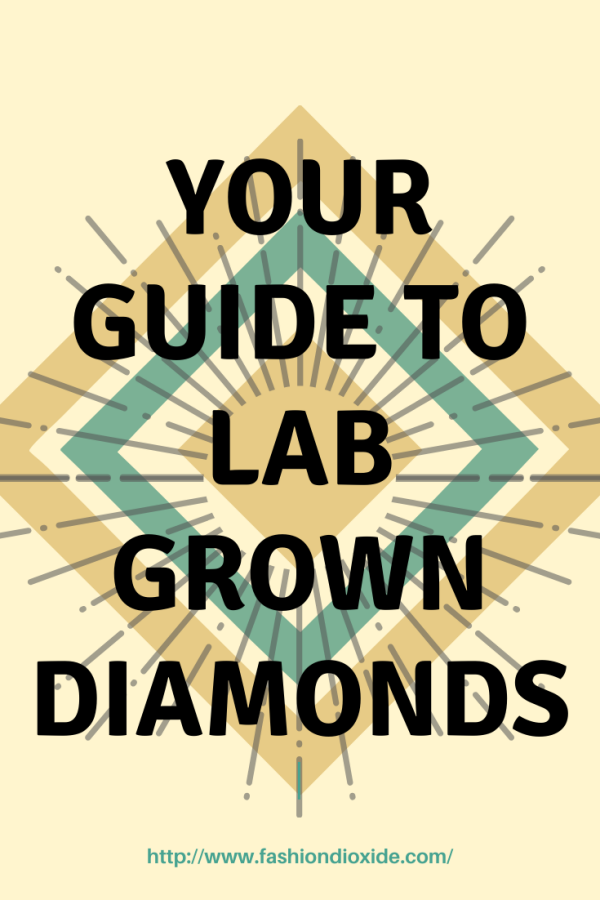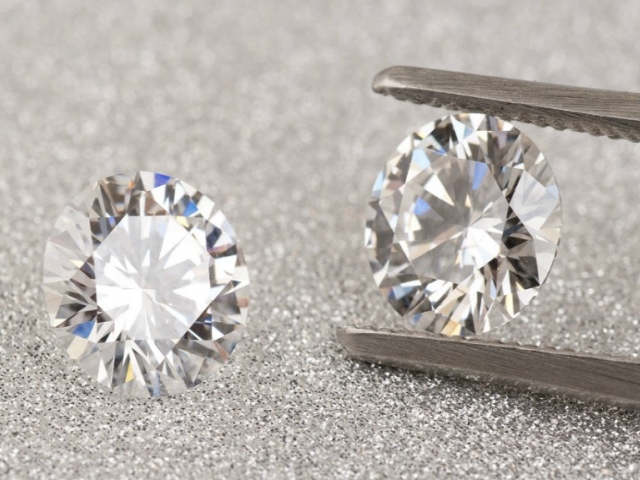Even people who don’t know much about gems know there are different types of diamonds. Pink and chocolate diamonds have both been very popular in recent years. Diamonds come in other colors, too, from blue to yellow and even purple. One increasingly common type of diamond is the lab grown, or synthetic, diamond. This is exactly what it sounds like: a diamond that comes from a laboratory instead of from the earth.
Your Guide to Lab Grown Diamonds

What Sets Lab Grown Diamonds Apart?
Synthetic diamonds are grown in labs. Apart from that, they share all the same characteristics of naturally sourced diamonds. A synthetic diamond isn’t a cubic zirconium. It’s a real diamond. Synthetics are judged on the same exact standards as naturally-occurring diamonds: color, clarity, cut and carat.
All diamonds are made entirely of carbon. In nature, it takes thousands to millions of years of heat, pressure and time to create a diamond. One reason that diamonds are so rare because they’re only created within a specific range of temperatures. Another is that they’re located underground. Mining diamonds is an expensive, labor-intensive and sometimes dangerous process.
By contrast, lab grown diamonds are essentially farmed. Professionals create the right conditions and use the right “seed” can be certain that at the end of the process, they’ll have the desired product. Synthetic diamonds can be made in a couple of different ways.
The Process of Making Synthetic Diamonds
Both methods for creating synthetic diamonds require very controlled conditions. The first method seeks to re-create the environmental conditions under which natural diamonds are formed. This is called the High Pressure/High Temperature method. A diamond seed is used, and then it’s subjected to some serious hydraulic pressure. The environment it grows in consists of carefully measured amounts of minerals like iron, nickel and cobalt. Companies that make HP/HT type lab grown diamonds guard their exact formulas carefully.
The second way to create synthetic diamonds is known as chemical vapor deposition. In this method, a diamond seed is placed in a sealed chamber. The chamber is heated to an unusually high temperature. Finally, carbon-rich hydrogen and methane gases are added. As the gases flood the chamber, carbon particles adhere to the seed. The high temperature breaks everything down. Carbon atoms break off from the carbon gas and attach to other carbon atoms. This method works much, much more quickly than natural diamond formation. In just two weeks, the CVD method can be used to create a synthetic diamond.
Differences Between Lab Grown and Naturally Formed Diamonds
It’s not easy to discern which diamonds are grown in a lab and which are naturally-formed. In fact, it’s almost impossible for even experts to tell with the naked eye. Remember, there’s no real difference between lab- and naturally grown diamonds at the molecular level. One of the most common methods is to test the purity of the carbon in the diamond. Most lab grown diamonds have unusually, perfectly pure carbon. Most naturally-occurring diamonds have at least a few impurities and trace elements in the mix.
Another test measures the way the diamond absorbs light. Both visible light and ultraviolet light are used in these tests. Synthetic diamonds grow in specific, recognizable patterns. Natural diamonds have different patterns. Of the two methods for telling which diamond type is which, this is the most accurate.
Sometimes, buyers want their diamonds tested to ensure they’re not being overcharged. Typically, because of their scarcity and the work involved in extracting them, natural diamonds cost more than synthetics. However, most diamond labs are responsible businesses. A well-managed lab will always disclose that their diamonds were grown in a controlled environment.
Where to Find Lab Grown Diamonds
Synthetic diamonds are becoming more popular every day. It’s easy to source them, both online and in brick-and mortar retailers. Customers like synthetic diamonds because they are more budget-friendly, while still retaining all the characteristics that people look for in a diamond.
When shopping for diamonds, remember: lab created diamonds are diamonds. Often, the only difference is the way they absorb light. Lab created diamonds are not a substitute, like crystals are. They’re simply a different version of the same great gemstone.

Reply